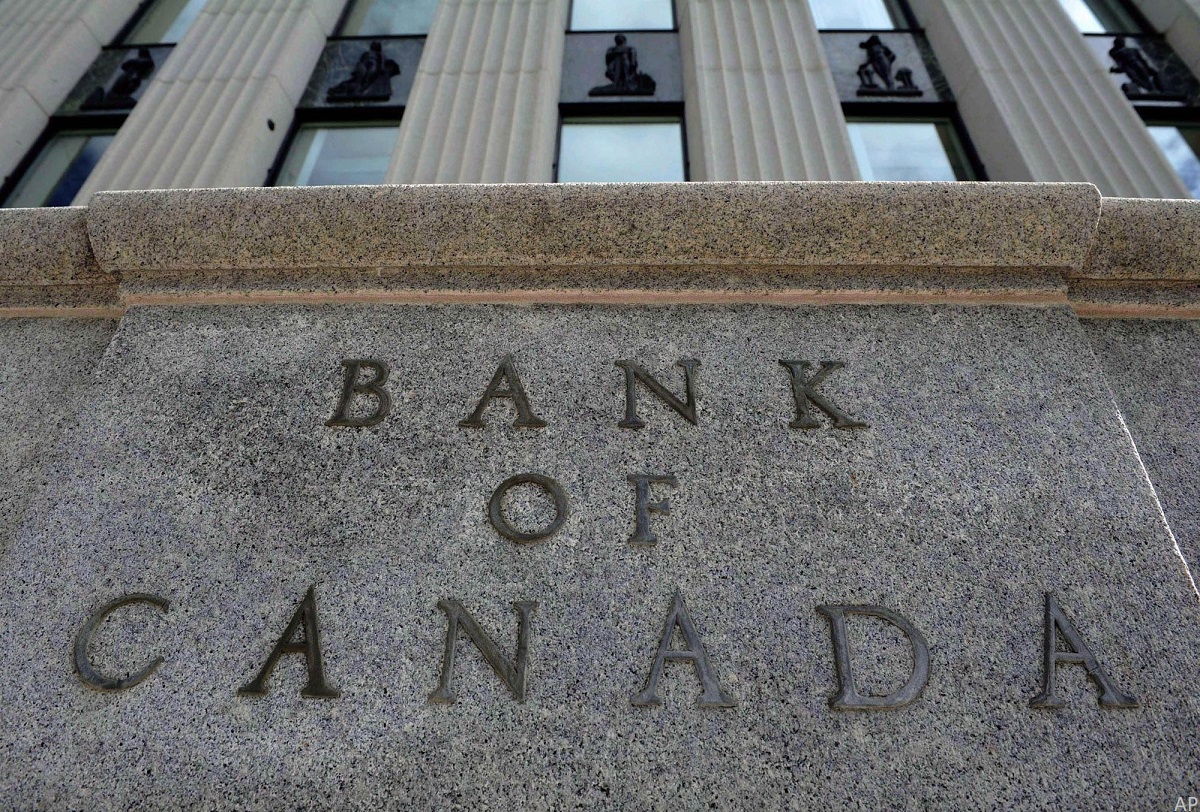
In its latest interest rate decision announcement on October 25, the Bank of Canada said that it is maintaining its target for the overnight rate of 5%, with the Bank Rate at 5.25% and the deposit rate at 5%. The Bank is continuing with its policy of quantitative tightening.
The Bank’s Monetary Policy Report, released simultaneously with the rate decision, said that inflationary pressures are more persistent than expected. “The outlook for GDP over 2024 has been revised down because of weaker consumption and housing spending. This weakness is due to a more prolonged impact from past monetary policy tightening and higher long-term interest rates,” the report said.
The Bank believes that a range of indicators suggest that supply and demand in the Canadian economy are now approaching balance. After averaging 1% over the past year, economic growth is expected to continue to be weak for the next year before increasing in late 2024 and through 2025. Overall, the Bank expects the Canadian economy to grow by 1.2% this year, 0.9% in 2024 and 2.5% in 2025.
Canadian Economic Growth: Supply and Demand Approaching Balance
In its note, the bank said that in Canada, there is growing evidence that past interest rate increases are dampening economic activity and relieving price pressures. “Consumption has been subdued, with softer demand for housing, durable goods, and many services. Weaker demand and higher borrowing costs are weighing on business investment. The surge in Canada’s population is easing labour market pressures in some sectors while adding to housing demand and consumption. In the labour market, recent job gains have been below labour force growth and job vacancies have continued to ease,” it said, adding that the labour market remains on the tight side and wage pressures persist.
What Does the Rate Decision Mean for Canadian Investors?
"Though interest rates remain flat, we urge investors to continue to keep a laser-sharp focus on their long-term investment goals, and not short-term market volatility brought forth by interest rate hikes, commodity prices, or general news flow,” says Morningstar Canada’s director of investment research, Ian Tam.
Inflation: Central Banks Continue to Stay Vigilant
The Bank of Canada's aggressive rate hikes since March 2022 are weighing on consumers and businesses, as the economy shrank in the second quarter and the labour market eased. Meanwhile, Canada's annual inflation rate fell to 3.8% in September as price pressures weakened across the economy.
Inflation has been easing in most economies, as supply bottlenecks resolve, and weaker demand relieves price pressures. “However, with underlying inflation persisting, central banks continue to be vigilant. Oil prices are higher than was assumed in July, and the war in Israel and Gaza is a new source of geopolitical uncertainty,” the Bank said.
It noted that higher interest rates are moderating inflation in many goods that people buy on credit, and this is spreading to services. “Near-term inflation expectations and corporate pricing behaviour are normalizing only gradually, and wages are still growing around 4% to 5%. The Bank’s preferred measures of core inflation show little downward momentum. In the Bank’s October projection, CPI inflation is expected to average about 3.5% through the middle of next year before gradually easing to 2% in 2025,” it noted.
Morningstar expects inflation to fall dramatically over the next year.
“Understanding why inflation will fall requires understanding why inflation became so bad in the first place. Over 2021 and 2022, strong consumer demand ran into a brick wall of supply constraints, causing prices to explode in many industries, especially food, energy, and durable goods. But demand is cooling off, thanks greatly to the Federal Reserve’s interest-rate hikes. Just as importantly, supply constraints are disappearing. With the main causes of high inflation now running in reverse gear, the U.S. economy is set to receive a large deflationary impulse,” said Morningstar’s Senior U.S. Economist Preston Caldwell. He expects inflation to fall to 3.7% for 2023. Over 2024 to 2027, we expect inflation to average just 1.8%—below the Fed’s 2.0% target.
What Should Canadian Investors Do?
Looking to act on today’s announcement? “If anything, the thing to do right now is to ensure that your mix between stocks and bonds is appropriate to the amount of risk that you can take on,” Tam says, “With this in mind, those with a very short time horizon (closer to retirement) might actually be advantaged by doing so, given that rates are higher than they have been for a long time and trimming up your bond position means that you're likely buying bonds with higher yields than available just a year ago."






.jpg)













